Calibrating the Sensor for Target Strength Value
You need to calibrate the sensor to offset the variability of the sensor transducer and of sound transmission. The aim is to have all sensors displaying the same target strength value (echogram color) for a given target.
Setting Up the Installation
Before you begin
- Make sure you have correctly configured the sensor settings, especially the pulse frequency.
- You can calibrate the sensor with or without the housing on.
- You need a cable extension to immerse the sensor and connect it to Mosa2 with the Configuration Cable or a Dock charger plug.
Procedure
-
Set up the following installation.
- Water needs to be still.
- Use a very thin fishing line (0.1 mm thick) to hold the ping pong ball.
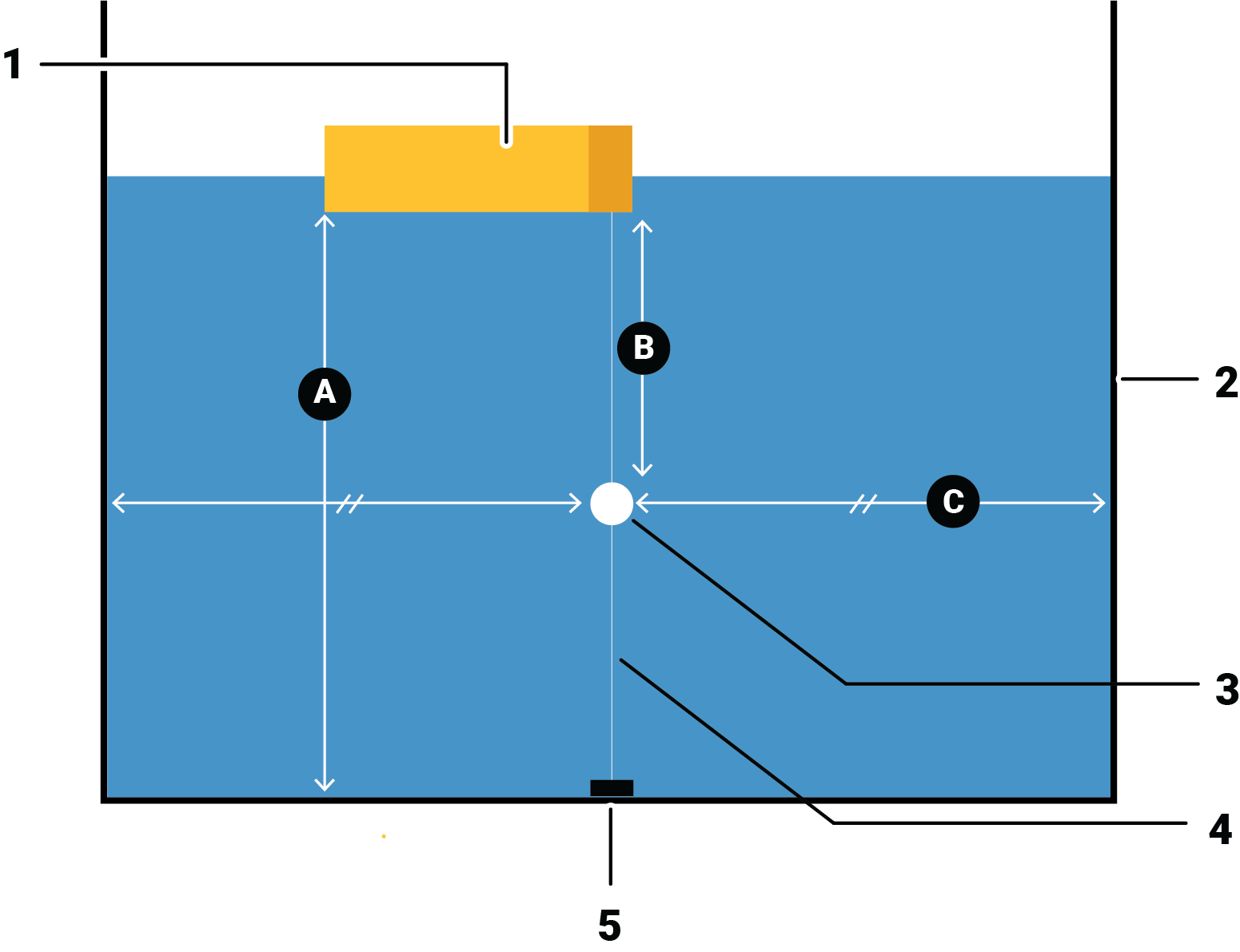
1. Sensor 2. Water tank
3. Ping pong ball
4. Fishing line
5. Counterweight
Recommended lengths A. Min. 150 cm.
B. Distance to target = 90 cm.
C. Min. 110 cm between ball and side walls.
- Before putting the sensor in water, connect the cable extension to the bottle.
-
Connect the Configuration Cable or a Dock charger plug to the other end of the
cable extension. If applicable, connect the Configuration Cable to the computer.
Notice: The Configuration Cable and charger plugs are not waterproof: do not immerse them.
- Wait for the sensor to connect to Mosa2.
-
Press command + A or click Menu
 and click .
and click .
-
In the Echo Sounder page, click
 next to the down or up
sounding, according to the sensor configuration.
next to the down or up
sounding, according to the sensor configuration.
- In TVG, select 40 log.
- We recommend to manually set the Pulse Type to Short (100 μs). With this length, the curve is sharper, so it is easier to identify the target on the chart.
- Click TS Calibration.
-
Make sure Disable Waterswitch is
activated. This prevents the sensor from switching into running mode when
the endcap is wet or immersed.
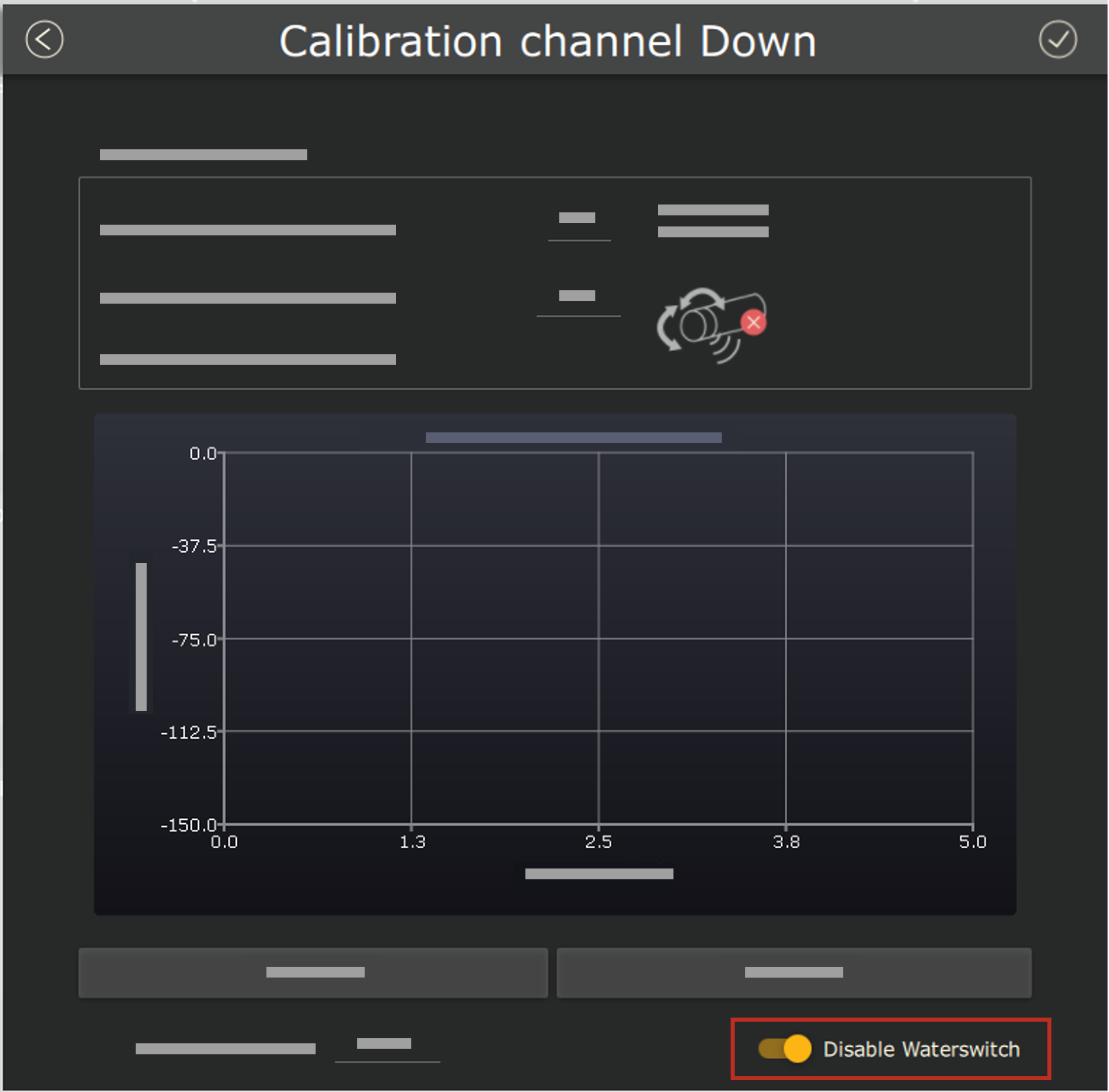
- Now you can put the sensor into water.
Calibrating the Sensor in Mosa2
Procedure
- Make sure the Expected target strength (dB) is -39 dB (target strength value of a ping pong ball of 39 mm diameter). In Distance from sensor to the target (cm) enter 90, or use the green markers after you send the ping.
-
Check that the pitch and roll of the sensor corresponds to the target
value, with a maximum difference of +/- 5°.
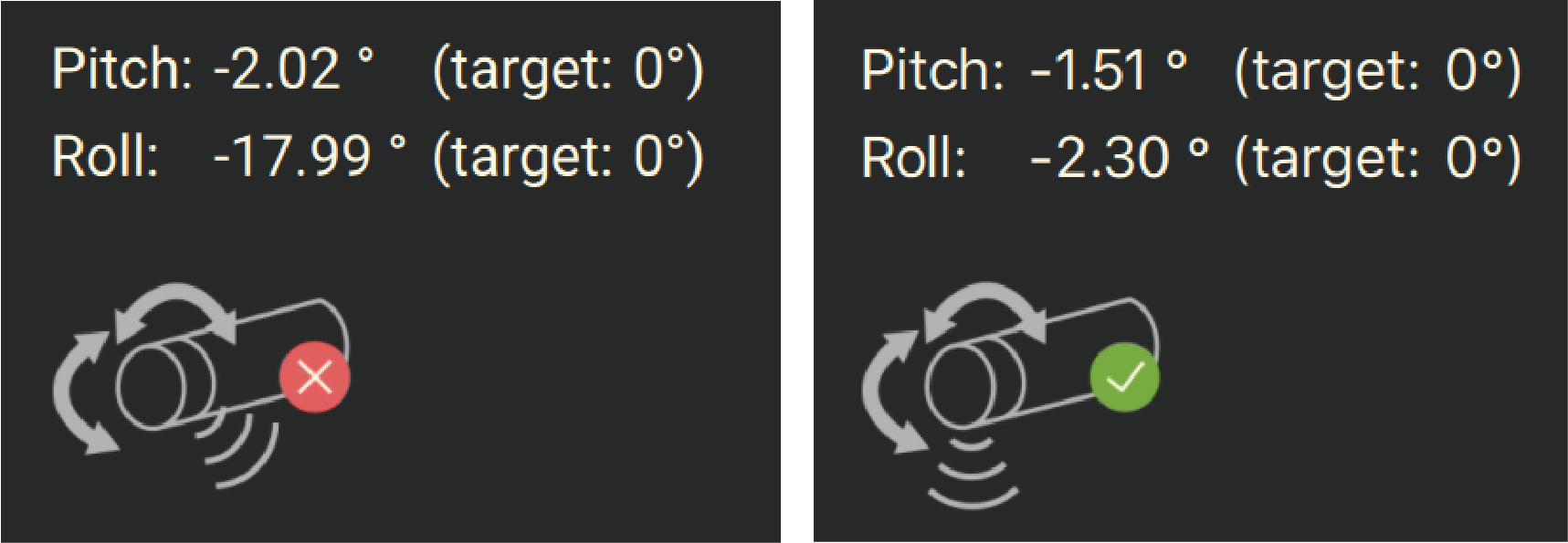
-
From the bottom of the screen, click Send ping to send one ping that will identify
the distance to the target.
A curve is displayed. Click anywhere on the graph to show the green markers. The horizontal line indicates the target strength and the vertical line indicates the distance. They must cross at the top of the curve corresponding to the ping pong ball. If not, drag the intersection point to the top of the curve. Scroll to zoom and double-click to come back to the default view.
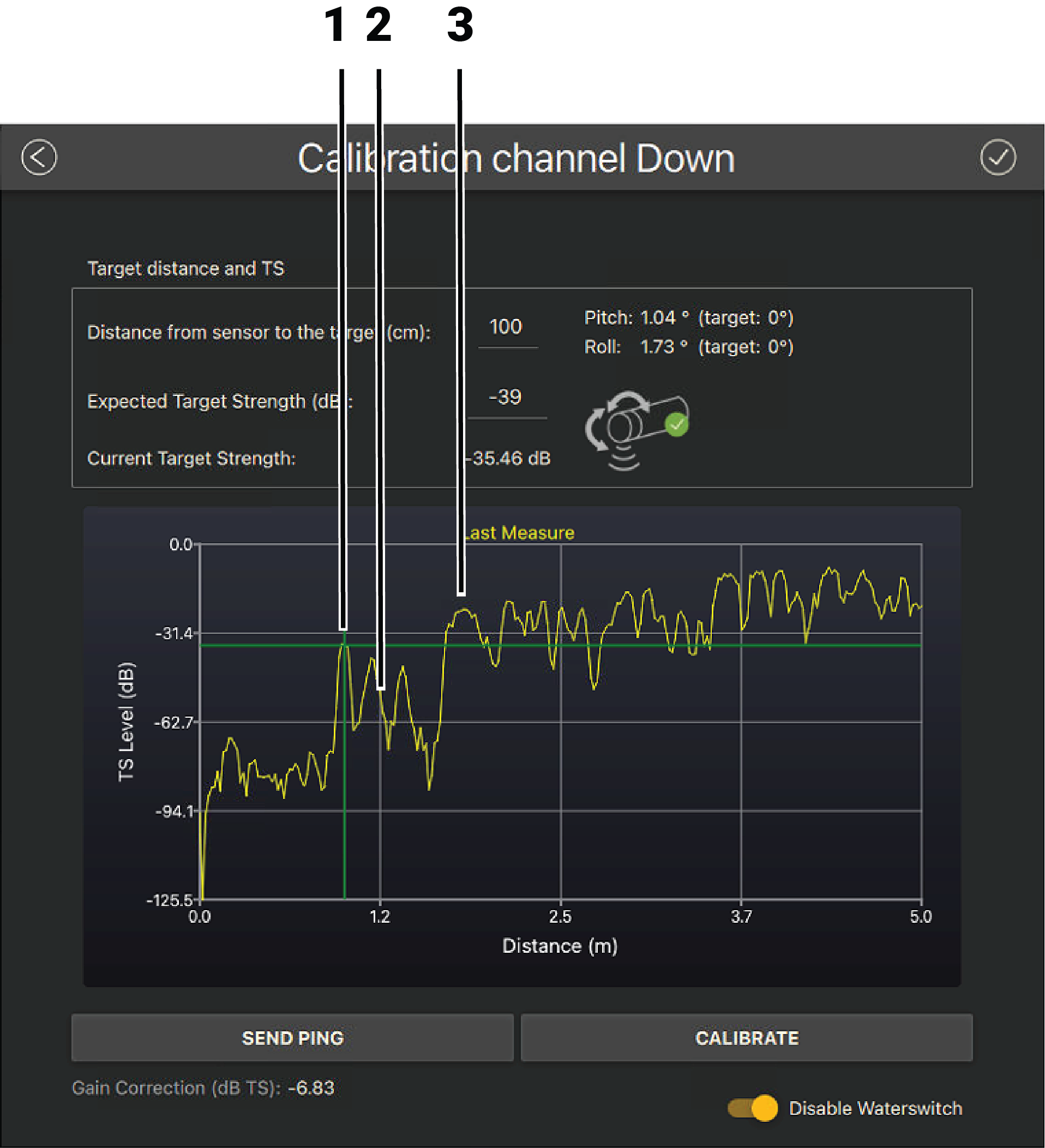
1. Ping pong ball / 2. Side lobes (tank walls) / 3. Bottom -
From the bottom of the screen, click Calibrate.
A new target strength offset is calculated.
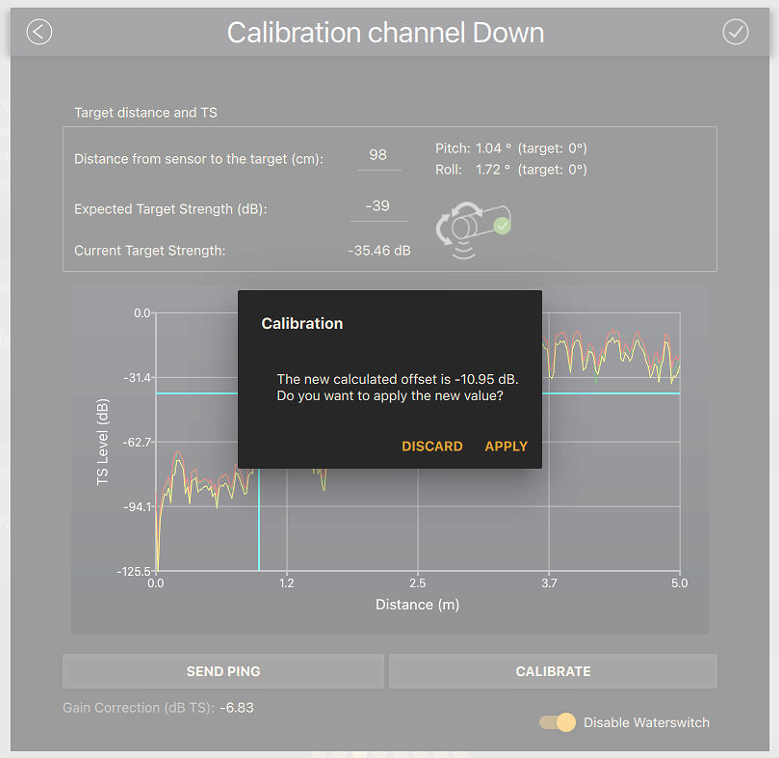
-
Accept the new calibration settings suggested in the dialog box. The gain
correction is auto-populated.
The sensor sends 1 ping to check if the calibration settings are correct in comparison to the target strength set (e.g. -39 dB). If they are correct, calibration settings are saved.
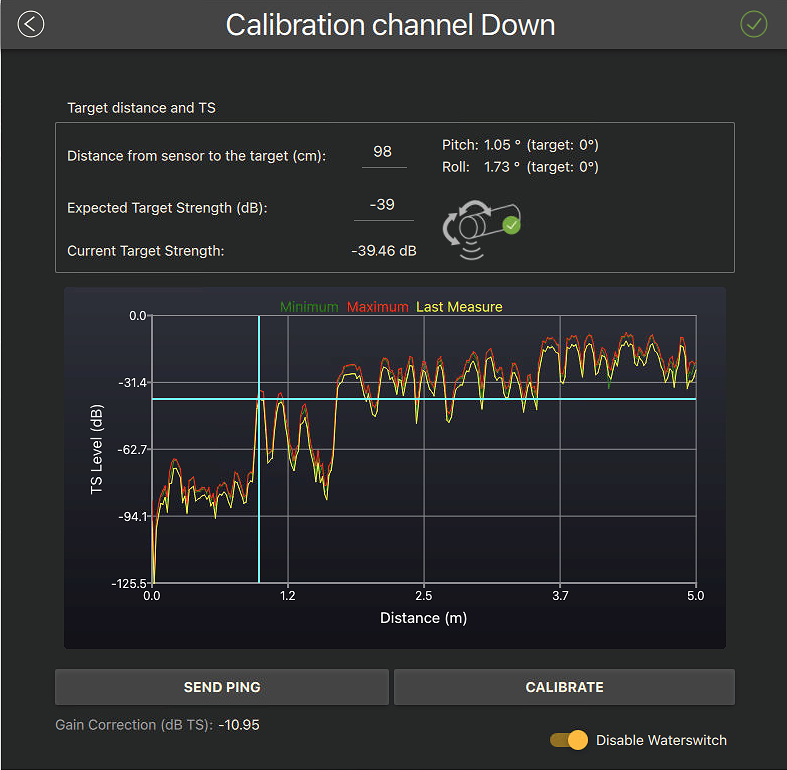
If calibration settings are not correct, check the installation in the water tank. Then restart the calibration procedure. - Click Send ping to check the target strength of the ball.
-
Click
 .
.
- Repeat for the other sounding channels.
